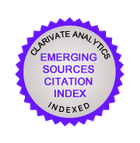1. Jiang B., Zhang Z.-W. Comparison on phenolic compounds and antioxidant properties of Cabernet Sauvignon and Merlot wines from four wine grape-growing regions in China. Molecules, 2012, vol. 17, no. 8, pp. 8804-8821. https://doi.org/10.3390/molecules17088804
2. Kubyshkin A., Ogai Y., Fomochkina I., Zaitsev G., Shramko Y. Polyphenols of red grape wines and alcohol-free food concentrates in rehabilitation technologies. Polyphenols. London, 2018, pp. 99-120. https://doi.org/10.5772/intechopen.76655
3. Ostroukhova E. V., Peskova I. V., Vyugina M. A. Comparative analysis of grape cultivars as sources of biologically active compounds: stilbenoids and flavonols. Dostizheniya nauki i tekhniki APK= Achievements of Science and Technology in AIC, 2019, vol. 33, no. 1, pp. 45-49 (in Russian). https://doi.org/10.24411/0235-2451-2019-10111
4. Šikuten I., Štambuk P., Andabaka Ž., Tomaz I., Marković Z., Stupić D., Maletić E., Kontić J. K., Preiner D. Grapevine as a rich source of polyphenolic compounds. Molecules, 2020, vol. 25, no. 23, art. 5604. https://doi.org/10.3390/molecules25235604
5. Tena N., Martín J., Asuero A. G. State of the art of anthocyanins: antioxidant activity, sources, bioavailability, and therapeutic effect in human health. Antioxidants, 2020, vol. 9, no. 5, art. 451. https://doi.org/10.3390/antiox9050451
6. Oliveira C., Ferreira A., De Freitas V., Silva A. M. S. Oxidation mechanisms occuring in wines. Food Research International, 2011, vol. 44, no. 5, pr. 1115-1126. https://doi.org/10.1016/j.foodres.2011.03.050
7. Ren M., Wang X., Du G., Tian C., Zhang J., Song X., Zhu D. Influence of different phenolic fractions on red wine astringency based on polyphenol/protein binding. South African Journal of Enology and Viticulture, 2017, vol. 38, no. 1, rp. 118-124. https://doi.org/10.21548/38-1-1295
8. Levchenko S., Ostroukhova E., Peskova I., Probeigolova P. Dynamics of phenolic components during the ripening of grapes from sub-Mediterranean climatic zone of the Crimea: influence on the quality of red wines. Acta Horticulturae, 2021, no. 1315, rp. 593-602. https://doi.org/10.17660/ActaHortic.2021.1315.87
9. Teixeira A., Eiras-Dias J., Castellarin S. D., Gerós H. Berry phenolics of grapevine under challenging environments. International Journal of Molecular Sciences, 2013, vol. 14, no. 9, pr. 18711-18739. https://doi.org/10.3390/ijms140918711
10. Chowdhary V., Alooparampil S., Pandya R. V., Tank J. G. Physiological function of phenolic compounds in plant defense system. Phenolic compounds - chemistry, synthesis, diversity, non-conventional industrial, pharmaceutical and therapeutic applications. London, 2022, pp. 185-205. https://doi.org/10.5772/intechopen.101131
11. Rodrigues P., Pedroso V., Reis S., Yang C., Santos J. A. Climate change impacts on phenology and ripening of cv. Touriga Nacional in the Dão wine region, Portugal. International Journal of Climatology, 2022, vol. 42, no. 14, pr. 7117-7132. https://doi.org/10.1002/joc.7633
12. Rybalko E., Ostroukhova E., Levchenko S. Spatial distribution of Crimean agroecological resources as a factor of variability of the main and secondary metabolites of grapes. BIO Web of Conferences, 2021, vol. 39, art. 01001. https://doi.org/10.1051/bioconf/20213901001
13. Padilla-González G. F., Grosskopf E., Sadgrove N. J., Simmonds M. S. J. Chemical diversity of flavan-3-ols in grape seeds: modulating factors and quality requirements. Plants, 2022, vol. 11, no. 6, art. 809. https://doi.org/10.3390/plants11060809
14. De Rosas I., Deis L., Baldo Y., Cavagnaro J. B., Cavagnaro P. F. High Temperature alters anthocyanin concentration and composition in grape berries of Malbec, Merlot, and Pinot Noir in a cultivar-dependent Manner. Plants, 2022, vol. 11, no. 7, art. 926. https://doi.org/10.3390/plants11070926
15. Xavier Machado T. de O., Portugal I. B. M., Padilha C. V. da S., Ferreira Padilha F., dos Santos Lima M. New trends in the use of enzymes for the recovery of polyphenols in grape byproducts. Journal of Food Biochemistry, 2021, vol. 45, p. e13712. https://doi.org/10.1111/jfbc.13712
16. Rajha H. N., Darra N. E., Kantar S. E., Hobaika Z., Louka N., Maroun R. G. A comparative study of the phenolic and technological maturities of red grapes grown in Lebanon. Antioxidants, 2017, vol. 6, no. 1, art. 8. https://doi.org/10.3390/antiox6010008
17. Wang Z., Yang N., Zhang J., Yuan C. Skin cell wall ripeness alters wine tannin profiles via modulating interaction with seed tannin during alcoholic fermentation. Food Research International, 2022, vol. 162, pt. A, art. 111974. https://doi.org/10.1016/j.foodres.2022.111974
18. Rybalko E. A., Baranova N. V., Borisova V. Y. Research of the dynamics and development of the spatial distribution forecast of heat supply of the Crimean Peninsula. Sistemy kontrolya okruzhayushchei sredy = Monitoring Systems of Environment, 2019, no. 3 (37), pp. 96-101 (in Russian). https://doi.org/10.33075/2220-5861-2019-3-96-101
19. Rybalko E. A. Climatic indices in viticulture. Magarach. Vinogradarstvo i vinodelie = Magarach. Viticulture and Winemaking, 2020, vol. 22, no. 1, pp. 26-28 (in Russian). https://doi.org/10.35547/IM.2020.22.1.005
20. Garrido-Bañuelos G., Buica A., Schückel J., Zietsman A. J. J., Willats W. G. T., Moore J. P., Du Toit W. J. Investigating the relationship between grape cell wall polysaccharide composition and the extractability of phenolic compounds into Shiraz wines. Part I: Vintage and ripeness effects. Food Chemistry, 2019, vol. 278, pp. 36-46. https://doi.org/10.1016/j.foodchem.2018.10.134
21. Ostroukhova E., Levchenko S., Volynkin V., Peskova I., Likhovskoi V., Probeigolova P., Vasylyk I., Polulyakh A. Chemical and technological features of native grape cultivars of Srimea. Vitis products composition, health benefits and economic valorization. New York, 2021, pp. 17-55.
22. Casassa L. F. Flavonoid phenolics in red winemaking. Phenolic compounds - natural sources, importance and applications. London, 2017, pp. 153-196. https://doi.org/10.5772/67452




































